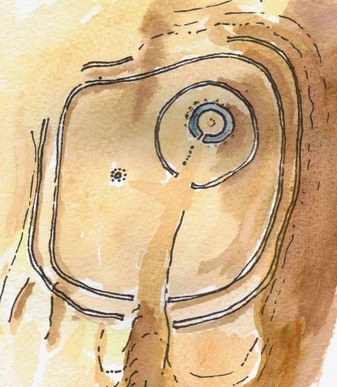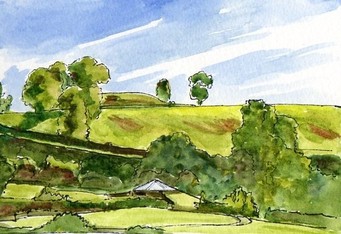The Early Region
|
Grave markers such as dolmens , cairns and court tombs are the most distinctive architectural legacy of prehistory to be found in Ulster. Often in windswept and inaccessible places they can be features of great character and presence. They are a strong reminder of the thousands of years that humans have inhabited this area. Most dolmens, like this example at Tirnony near Maghera, would have been covered in a cairn of stones when originally built, as would the later triangular shaped 'court cairns'. This provided a relative unity of appearance in the early landscape.
Later generations clearly honoured some of these spaces for such features have been found at the centre of subsequent circular earthworks such as at Grianan of Aleach (recorded in the 1830's), at Burt in Co. Donegal, or the ritual centre of the Giant's Ring to the south of Belfast. The circular theme of these spaces was to become a dominant form in subsequent centuries with the form found at great royal sites such as Emain Macha to the south of Armagh, and in the earthen ringforts or raths which are scattered accoss the region. These, along with similar circular artificial islands in lakes called 'crannogs', appear to have been the dominant architectural form to at least the Twelfth Century. The circular bank enclosed circular buildings and allowed the retention of animals in a strongly agricultural society. |
|
Tirnony Dolmen, Maghera, Co. L'derry.
Grianan of Alieach, Burt, Co Donegal, based on an 1830 drawing.
Navan Fort (Emain Macha), Co. Armagh.
|




